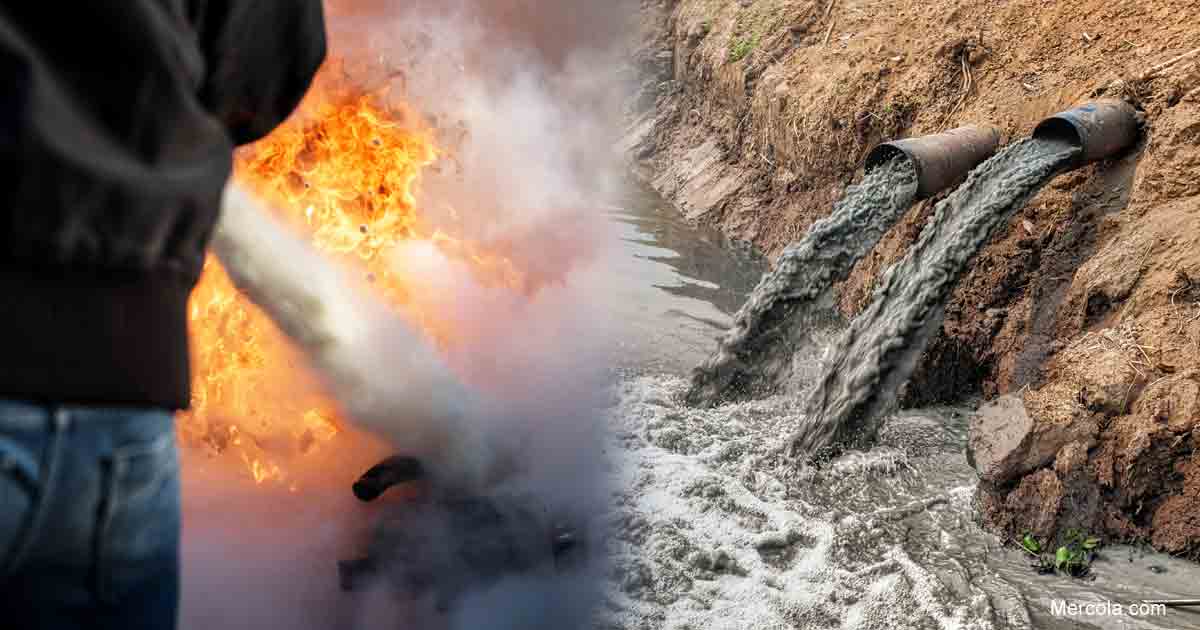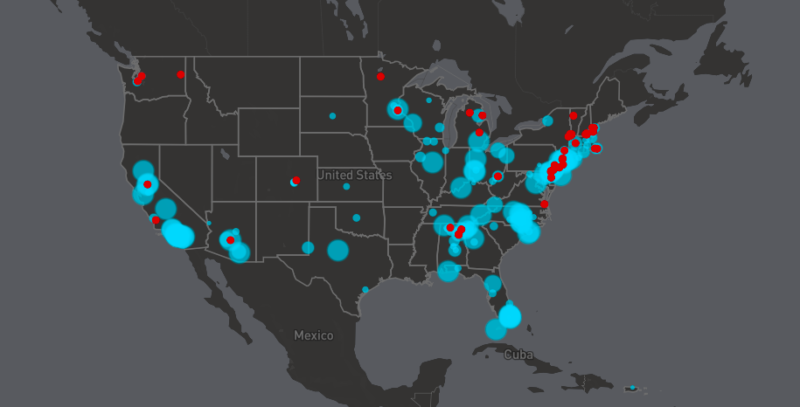
The Air National Guard Gives Misinformation to Vermont Senate Committee
Pat Elder / Military Poisons and the Vermont PFAS and Military Poisons Coalition
VERMONT (March 16, 2021) — I sat in on the March12, 2021 hearing of the Vermont Senate Health and Welfare Committee concerning S.20 — An act relating to restrictions on perfluoroalkyl and polyfluoroalkyl substances (PFAS) and other chemicals of concern in consumer products.
The bill states, “A person, municipality, or State agency shall not discharge or otherwise use for training purposes class B firefighting foam that contains intentionally added PFAS.”
Most governmental meetings in Vermont and around the country are available on video so it is simple to capture the public record. Segments of the committee’s transcripts are followed by my analysis. I respect the work performed by these dedicated public servants — although they’ve been lied to and they’ve acted on these lies.
The Vermont Air National Guard apparently told Vermont lawmakers that they no longer use PFAS in fire-fighting foams. The record shows, however, it is still used in Vermont and across the country. (See minute 20:00.) https://www.youtube.com/watch?v=YtQUzt2e_hM
In theory, National Guard units are under the dual control of the state governments and the federal government, but it doesn’t work that way. The federal government is free to contaminate Vermont’s environment with no oversight, although these proceedings suggest otherwise.

Toxic contaminants are present in the drinking water of 15 million Americans.
Transcript and Commentary
Sen. Ruth Hardy: (19:12) I asked (Legislative Counsel) Katie McLinn to look into the relationship between the National Guard and this bill and what would apply/not apply to them.
Military Poisons: Nothing “applies” to the National Guard without its consent. Senate Bill 20 states, “Any manufacture, sale, or distribution of class B firefighting foam where the inclusion of PFAS is required by federal law, including the requirements of 14 C.F.R. 139.317 (aircraft rescue and firefighting: equipment and agents), as that section existed as of January 1, 2020, is allowed.” The Air Force claims it is not subject to Vermont law and the Vermont legislature is OK with this arrangement.
Sen. Ruth Hardy: (continued) I’m sure you all are getting emails about this as well, but it has come up and Kate did some research. I can read what she wrote to me. She also consulted with (Legislative Counsel) Damian Leonard who drafts in the area and works on jurisdictional issues with the military. (20:00) Damian has reached out to the National Guard and they confirmed they no longer use firefighting foam containing PFAS.
Military Poisons: Not true. PFAS foams are used at Guard bases across the country. From the ANG inspection report on PFAS:
“C8 AFFF (8-carbon chain varieties of PFAS — i.e., PFOS and PFOA) at the Burlington ANGB has been removed, properly disposed of, and replaced with short-chain six carbon based (C6) AFFF, approved under the U.S. EPA’s Stewardship Program. C6 PFAS are currently considered lower in toxicity and have significantly reduced bioaccumulation potential compared to C8 PFAS. (ITRC, 2018b and USEPA, 2019).”
Pg. 2 FINAL EXPANDED SITE INSPECTION REPORT FOR PER- AND POLY-FLUOROALKYL SUBSTANCES (PFAS) AT THE BURLINGTON AIR NATIONAL GUARD BASE SOUTH BURLINGTON, VERMONT Sept. 2020
The Air Force claims the C8 (8-carbon chain PFOS & PFOA) has been “removed and properly disposed of” but the deadly chemicals continue to slowly leach off base and into the Winooski and likely will for our lifetimes and future generations. Aquatic life is poisoned.
We don’t know how to “properly dispose of” PFAS. As recent as last year, the Burlington base had been shipping PFAS-laced material for “final disposal” to the landfill operated by Envirosafe Services of Ohio, located in Toledo near the banks of the Maumee River where it empties into Lake Erie. How, exactly do they “finally dispose” of forever chemicals? Finally, the lower toxicity claim is debatable with several 6-C PFAS linked to a host of cancers, poor COVID outcomes, fetal abnormalities, etc.
Sen. Ruth Hardy: (continued) Damian also tells me that when the Guard is in state status, they are a state entity subject to state law except when federal law pre-empts the state law. For example, federal laws and regulations determine the weapons, uniforms, training equipment, system of rank, and so forth for the Guard. When they are in federal status, they are a federal entity subject to federal law.
Military Poisons: There is no difference between “state status” and “federal status” regarding the poisons leaching into the Winooski River from the Burlington AFB base or any of the other environmental crimes perpetrated by the DOD in Vermont. The Air Force claims that federal sovereign immunity allows it to disregard attempts by the small number of states that have tried to force it to comply with regulations that cap the amount of PFAS chemicals entering the environment.
Does the state of Vermont or its designee have the right to enter military bases to sink wells to independently confirm levels of contamination? No way. In this regard the state of Vermont is no less a subject of imperial military rule than, say, bases in Okinawa, Japan or Ansbach, Germany. There’s only one “status” and that’s the one that works for the Pentagon.
Sen. Ruth Hardy: (continued) But Camp Johnson, The Air Guard facility, the Burlington Airport and the armories around the state are subject to a wide array of federal requirements.
Military Poisons: Federal requirements?
Federal requirements allow 7 different types of PFAS containing 704.4 ppt of PFAS to drain into the Winooski River from the Burlington base, threatening aquatic and human life. Far lower concentrations of these chemicals in rivers across the country have rendered the fish unsafe to eat. Vermont, meanwhile, has still not tested its fish for PFAS.
Federal requirements allow the National Guard to contaminate Vermont’s groundwater. The state says the sum of five PFAS chemicals: PFOS, PFOA, PFHxS, PFHpA, and PFNA cannot exceed 20 parts per trillion in groundwater while the groundwater at the Air National Guard base in Burlington contains 110,980 ppt of the five.
Federal requirements allow these 19 contaminants to poison groundwater to these levels in Burlington: 1,1-Dichloroethane 220,000 ppt, 1,1,1-Trichloroethane 310,000 ppt. 1,2-Dichloroethylene (Total) 3,100,000 ppt, 1,2-Dichlorobenzene 140,000 ppt, 1,2,4-Trimethylbenzene 270,000 ppt, 1,3-Dimethylbenzene 520,000 ppt, Acetone 950,000 ppt, Arsenic 57,200 ppt, Barium 59,300 ppt, Benzene 320,000 ppt, Ethyl benzene 290,000, Iron 11,500,000 ppt, Lead 13,700 ppt, Manganese and compounds 4,390,000 ppt, Naphthalene 96,000 ppt, o-Xylene 740,000 ppt, Toluene 840,000 ppt, Trichloroethylene (TCE) 3,000 ppt, Vinyl Chloride 110,000 ppt Source: DOD/Propublica
Federal requirements allow your armories to poison indoor and outdoor environments with horrific levels of lead from firing ranges.
Sen. Ruth Hardy: (continued) So, my understanding is that this bill would apply to the National Guard. When they’re in state status which is when they’re helping the state with things and so most of the time, they’re in state status and that their facilities are state facilities and they don’t use PFAS in their fire-fighting foams So, hopefully, that answers some of the questions.
Military Poisons: This same DOD dog and pony show occurs in states across the country, although a handful of states like New Jersey, Michigan and New Mexico are suing the DOD for non-compliance with state environmental regulations and damages caused by their use of PFAS on military installations. Vermont has ceded its responsibility to protect the health of the people of the Green Mountain state to the US military.

Postscript: How to navigate Air Force Civil Engineer Center for PFAS contamination
Go here: https://www.afcec.af.mil/News/Administrative-Record/
- Click where it says: “Please click here for access to the administrative record.”
- On the next screen, click on “Continue to Site” below.
- Then note the three buttons at the top: Active Duty, Air National Guard, and BRAC. (closed based). Then, select ANG Then select Burlington.
- Under full document search, put in PFAS and look below for “Final Site Inspection Report for PFOS/PFOA (Part 1 of 2)
- Search for terms like “analytical results” “groundwater” “surface water” “Winooski”
On Sunday, March 21st — the day before World Water Day — we are offering a webinar to introduce people to our newly designed website—Military Poisons—which will expose the connections between water, food, and health to military PFAS contamination. The webinar will be one-hour: 2 PM-PST, 3 PM-MST, 4 PM-CST, or 5 PM-EST. Register in advance for this program at: https://bit.ly/MilitaryPoisons
How to Help: We’d like to test fish near the burn pits of military installations throughout New England and in Maryland. Can you help us? You’ll receive regular newsletters tracking our progress. Our goal is $10,000. We’ve raised close to $2,000 already. Any amount will help. Thank you. — Pat Elder